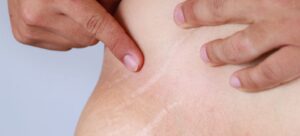Stretch marks, or striae, are a common skin condition that can appear for various reasons, including rapid growth, hormonal changes, and weight fluctuations. While all stretch marks result from the skin being stretched beyond its capacity, they can vary in appearance and classification. In this article, we’ll explore the different types of stretch marks, how to identify them, and what you can do to manage their appearance.
What Are Stretch Marks?
Stretch marks occur when the skin is stretched too quickly, causing the middle layer of the skin (dermis) to tear. This tearing allows the underlying blood vessels to show through, giving fresh stretch marks a reddish or purplish color. Over time, these marks fade but leave behind scars that may appear white or silver.
The Main Types of Stretch Marks
Stretch marks can be categorized based on their appearance, cause, and age. Here are the most common types:
1. Striae Rubrae
These are new stretch marks that are typically red, purple, or pink in color.
Characteristics:
- Raised and inflamed texture.
- Can feel slightly itchy or tender.
- Most visible during the early stages of development.
Causes:
- Rapid weight gain or loss.
- Pregnancy, especially in the second and third trimesters.
- Puberty-related growth spurts.
Treatment:
- Early intervention is key: Use retinoid creams or treatments containing hyaluronic acid to promote collagen repair.
- Moisturization: Helps soothe the skin and reduce inflammation.
- Laser therapy: Targets the redness and boosts collagen production for faster healing.
2. Striae Albae
These are mature stretch marks that appear white or silver and are less visible than striae rubrae.
Characteristics:
- Flattened texture and often feel slightly depressed compared to the surrounding skin.
- No longer inflamed, making them less noticeable.
- Harder to treat as they’ve already healed.
Causes:
- Progression from untreated or naturally healed striae rubrae.
- Long-term stretching of the skin.
Treatment:
- Microneedling: Stimulates collagen production to improve skin texture.
- Chemical Peels: Exfoliates the surface layer of the skin, promoting regeneration.
- Laser Resurfacing: Targets deeper layers to improve skin tone and texture over time.
3. Striae Gravidarum
These stretch marks are specifically associated with pregnancy.
Characteristics:
- Commonly appear on the abdomen, breasts, hips, and thighs.
- Range in color from red to white, depending on their stage.
- Often develop in the second or third trimester as the belly grows.
Causes:
- Hormonal changes weaken the skin’s elasticity.
- Rapid expansion of the abdominal area.
Treatment:
- Preventive care: Use oils or creams containing vitamin E or shea butter during pregnancy to maintain skin elasticity.
- Post-pregnancy care: Consider retinol-based products (after consulting your doctor) or laser treatments for more stubborn marks.
4. Striae Distensae
This term refers to stretch marks caused by rapid skin stretching due to various factors.
Characteristics:
- Can vary in color from red to white, depending on their age.
- Typically appear on the thighs, buttocks, arms, and back.
Causes:
- Bodybuilding or intense muscle growth.
- Obesity or rapid weight gain.
- Medical conditions like Cushing’s syndrome.
Treatment:
- Massage therapy: Helps improve circulation and minimize the appearance of stretch marks.
- Topical treatments: Products with glycolic acid can help exfoliate and promote skin regeneration.
- Professional treatments: Radiofrequency therapy or ultrasound can target deeper layers of the skin.
5. Striae Atrophicans
These are thin and shallow stretch marks that often occur due to underlying medical conditions or long-term corticosteroid use.
Characteristics:
- Fine lines that are more subtle than other types.
- Skin may feel thinner or more fragile in the affected area.
Causes:
- Prolonged use of steroid creams or medications.
- Medical conditions that affect collagen production, like Marfan or Ehlers-Danlos syndrome.
Treatment:
- Reduce steroid use (under medical guidance).
- Collagen-boosting treatments: Include peptide-based products to restore skin strength.
- Consult a dermatologist: Seek personalized advice based on the underlying condition.
6. Striae Caerulea
These are dark blue or purplish stretch marks, often seen in individuals with darker skin tones.
Characteristics:
- Richer pigmentation due to melanin in the skin.
- Can appear more prominent compared to lighter skin tones.
Causes:
- Rapid skin stretching.
- Hormonal imbalances or genetic predisposition.
Treatment:
- Skin-brightening treatments: Products with vitamin C or niacinamide can help even out pigmentation.
- Laser treatments: Fractional lasers can reduce discoloration and improve texture.
How to Identify the Type of Stretch Marks You Have
Understanding the type of stretch marks you have is essential for choosing the most effective treatment. Ask yourself:
- How old are the stretch marks? Fresh marks are usually red or purple, while older ones are white or silver.
- What caused them? Pregnancy, rapid weight changes, or medical conditions may influence their appearance.
- Where are they located? The location can provide clues about their cause and type.
Can Stretch Marks Be Prevented?
While it’s not always possible to prevent stretch marks, you can minimize the risk with these tips:
- Moisturize Regularly: Keep your skin hydrated to maintain its elasticity.
- Stay Active: Regular exercise improves circulation and strengthens the skin.
- Eat a Balanced Diet: Include foods rich in vitamins and minerals that support collagen production.
- Avoid Rapid Weight Changes: Aim for gradual weight gain or loss to reduce skin stress.
Conclusion
Stretch marks come in many forms, each with unique characteristics and causes. Whether you’re dealing with fresh striae rubrae or more mature striae albae, understanding the type of stretch marks you have can help you choose the right treatments. Remember, stretch marks are a natural part of life and nothing to be ashamed of. With the right care, you can manage their appearance and feel confident in your skin.




